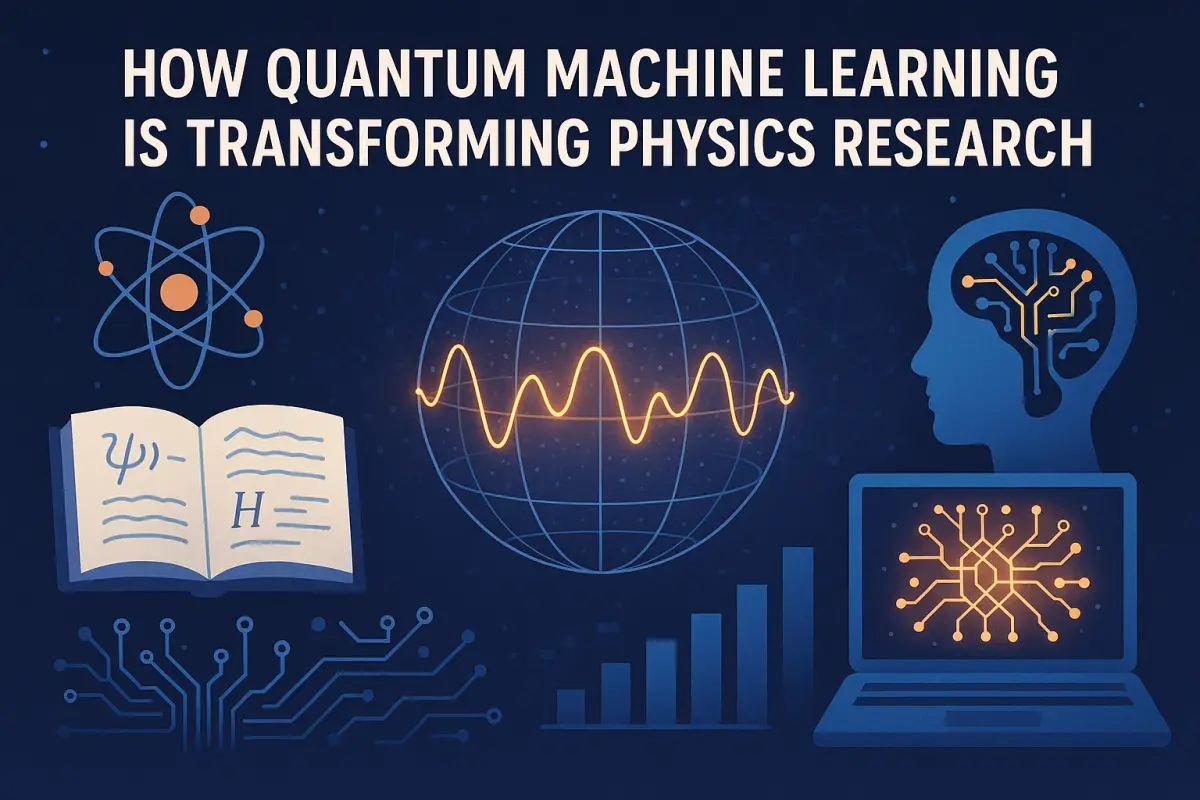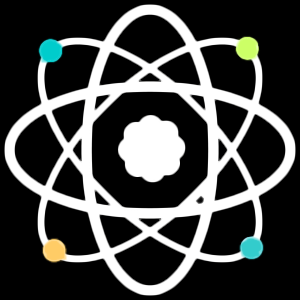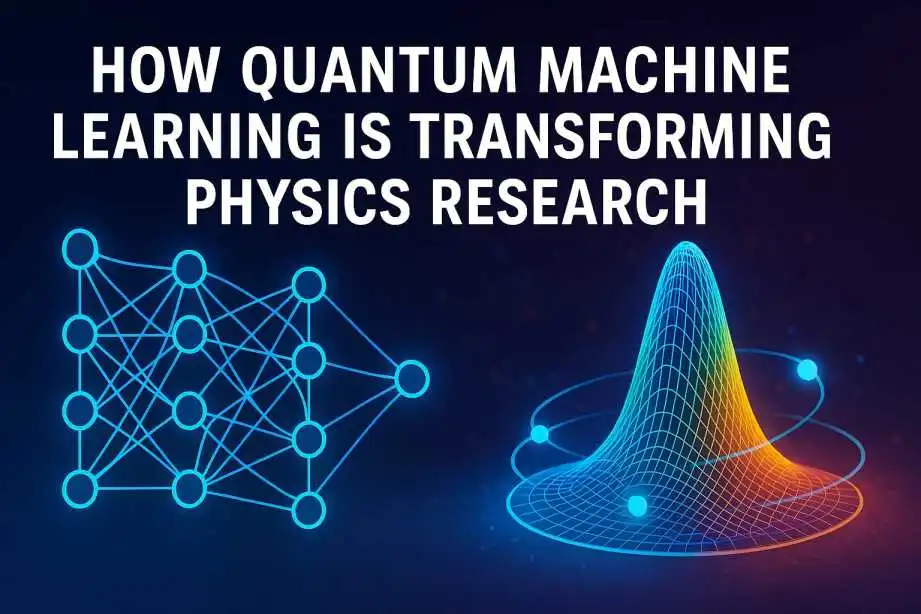The field of quantum computing contains a run of disciplines, counting quantum equipment and quantum calculations. Whereas still in advancement, quantum innovation will before long be able to unravel complex issues that supercomputers can’t illuminate, or can’t fathom quick enough.
By taking advantage of quantum material science, completely realized quantum computers would be able to prepare greatly complicated issues at orders of size quicker than advanced machines. For a quantum computer, challenges that might take a classical computer thousands of a long time to total might be diminished to a matter of minutes.
The consider of subatomic particles, too known as quantum mechanics, uncovers one of a kind and crucial common standards. Quantum computers tackle these essential wonders to compute probabilistically and quantum mechanically.
What Is Quantum Machine Learning?

Quantum Machine Learning is a hybrid field that combines:
- Quantum Computing: A new form of computation based on the principles of quantum mechanics, which uses qubits instead of classical bits.
- Machine Learning: A branch of artificial intelligence where algorithms learn from data to make predictions or decisions.
QML uses quantum processors to enhance machine learning tasks either by speeding up classical algorithms or by solving problems that are computationally infeasible for classical computers. It’s not just about faster computing; it’s about a different kind of computing.
4 Key Standards of Quantum Machine Learning in Physics
Understanding quantum computing requires understanding these four key standards of quantum mechanics:-
1: Superposition: Superposition is the state in which a quantum molecule or framework can speak to not fair one plausibility, but a combination of numerous possibilities.
Related Article: What Inventions Are Based on Quantum Mechanics?
2: Entanglement: Ensnarement is the handle in which numerous quantum particles gotten to be related more unequivocally than customary likelihood allows.
3: Decoherence: Decoherence is the prepare in which quantum particles and frameworks can rot, collapse or alter, changing over into single states quantifiable by classical physics.
4: Interference: Impedances is the marvel in which ensnared quantum states can associated and deliver more and less likely probabilities.
Qubits
While classical computers depend on parallel bits (zeros and ones) to store and handle information, quantum computers can encode indeed more information at once utilizing quantum bits, or qubits, in superposition. A qubit can carry on like a bit and store either a zero or a one, but it can too be a weighted combination of zero and one at the same time.
When combined, qubits in superposition can scale exponentially. Two qubits can compute with four pieces of data, three can compute with eight, and four can compute with sixteen.
However, each qubit can as it were yield a single bit of data at the conclusion of the computation. Quantum calculations work by putting away and controlling data in a way blocked off to classical computers, which can give speedups for certain problems.
As silicon chip and superconductor improvement has scaled over the a long time, it is unmistakably conceivable that we might before long reach a fabric restrain on the computing control of classical computers.
Quantum computing may give a way forward for certain vital issues. With driving educate such as IBM, Microsoft, Google and Amazon joining energetic new companies such as Rigetti and Ionq in contributing intensely in this energizing unused innovation, quantum computing is evaluated to ended up a USD 1.3 trillion industry by 2035.
How Do Quantum Machine Learning in Physics Work?

A essential contrast between classical and Quantum Machine Learning in Physics is that quantum computers utilize qubits instep of bits to store exponentially more data. Whereas quantum computing does utilize parallel code, qubits prepare data in an unexpected way from classical computers. But what are qubits and where do they come from?
What Are Qubits?
Generally, qubits are made by controlling and measuring quantum particles (the littlest known building pieces of the physical universe), such as photons, electrons, caught particles and particles. Qubits can too build frameworks that carry on like a quantum molecule, as in superconducting circuits.
To control such particles, qubits must be kept greatly cold to minimize commotion and anticipate them from giving wrong comes about or blunders coming about from unintended decoherence. There are numerous distinctive sorts of qubits utilized in quantum computing nowadays, with a few superior suited for diverse sorts of tasks.
A few of the more common sorts of qubits in utilize are as follows:-
- Superconducting qubits: Made from superconducting materials working at greatly moo temperatures, these qubits are favored for their speed in performing computations and fine-tuned control.
- Trapped particle qubits: Caught particle particles can moreover be utilized as qubits and are famous for long coherence times and high-fidelity measurements.
- Quantum dabs: Quantum dabs are little semiconductors that capture a single electron and utilize it as a qubit, advertising promising potential for adaptability and compatibility with existing semiconductor technology.
- Photons: Photons are person light particles utilized to send quantum data over long separations through optical fiber cables and are right now being utilized in quantum communication and quantum cryptography.
- Neutral particles: Commonly happening unbiased particles charged with lasers are well suited for scaling and performing operations.
When handling a complex issue, such as figuring huge numbers, classical bits gotten to be bound up by holding expansive amounts of data. Quantum bits carry on in an unexpected way. Since qubits can hold a superposition, a quantum computer that employments qubits can approach the issue in ways diverse from classical computers.
As a accommodating similarity for understanding how quantum computers utilize qubits to unravel complicated issues, envision you are standing in the center of a complicated labyrinth.
To elude the labyrinth, a conventional computer would have to “brute force” the issue, attempting each conceivable combination of ways to discover the exit. This kind of computer would utilize bits to investigate modern ways and keep in mind which ones are dead ends.
Comparatively, a quantum computer might infer a bird’s-eye see of the labyrinth, testing numerous ways at the same time and utilizing quantum obstructions to uncover the redress arrangement.
Be that as it may, qubits do not test numerous ways at once; instep, quantum computers degree the likelihood amplitudes of qubits to decide an result. These amplitudes work like waves, covering and interferometer with each other. When nonconcurrent waves cover, it successfully dispenses with conceivable arrangements to complex issues, and the realized coherent wave or waves show the arrangement.
When talking about quantum computers, it is vital to get it that quantum mechanics is not like conventional material science. The behaviors of quantum particles frequently show up to be odd, outlandish or indeed incomprehensible. However the laws of quantum mechanics direct the arrange of the common world.
Describing the behaviors of quantum particles presents a special challenge. Most common-sense standards for the normal world need the lexicon to communicate the shocking behaviors of quantum particles.
To get it quantum computing, it is imperative to get it a few key terms:
Superposition
Entanglement
Decoherence
Interference.
Superposition
A qubit itself isn't exceptionally valuable. But it can put the quantum data it holds into a state of superposition, which speaks to a combination of all conceivable arrangements of the qubit.
Bunches of qubits in superposition can make complex, multidimensional computational spaces. Complex issues can be spoken to in unused ways in these spaces. This superposition of qubits gives quantum computers their characteristic parallelism, permitting them to prepare numerous inputs simultaneously.
Entanglement
Entanglement is the capacity of qubits to relate their state with other qubits. Snared frameworks are so inherently connected that when quantum processors degree a single snared qubit, they can promptly decide data around other qubits in the entrapped framework.
When a quantum framework is measured, its state collapses from a superposition of conceivable outcomes into a double state, which can be enlisted like double code as either a zero or a one.
Decoherence
Decoherence is the prepare in which a framework in a quantum state collapses into a nonquantum state. It can be intentioned activated by measuring a quantum framework or by other natural variables (now and then these variables trigger it inadvertently). Decoherence permits quantum computers to give estimations and connected with classical computers.
Interference
An environment of ensnared qubits put into a state of collective superposition structures data in a way that looks like waves, with amplitudes related with each result. These amplitudes ended up the probabilities of the results of a estimation of the framework.
These waves can construct on each other when numerous of them crest at a specific result, or cancel each other out when crests and troughs associated. Increasing a likelihood or canceling out others are both shapes of interference.
How the Standards Work Together?
To superior get it quantum computing, consider that two irrational thoughts can both be genuine. The to begin with is that objects that can be measured—qubits in superposition with characterized likelihood amplitudes—behave haphazardly.
The moment is that objects as well removed to impact each other—entangled qubits—can still carry on in ways that, in spite of the fact that exclusively arbitrary, are by one means or another unequivocally correlated.
A computation on a quantum computer works by planning a superposition of computational states. A quantum circuit, arranged by the client, employments operations to create ensnarement, driving to impedances between these diverse states, as represented by an calculation. Numerous conceivable results are canceled out through impedances, whereas others are intensified. The intensified results are the arrangements to the computation.
Classical Computing Vs Quantum Computing
Quantum computing is built on the standards of Quantum Machine Learning in Physics, which depict how subatomic particles carry on in an unexpected way from macrolevel material science. But since quantum mechanics gives the foundational laws for our whole universe, on a subatomic level, each framework is a quantum system.
For this reason, we can say that whereas customary computers are moreover built on beat of quantum frameworks, they fall flat to take full advantage of the quantum mechanical properties amid their calculations. Quantum computers take superior advantage of quantum mechanics to conduct calculations that indeed high-performance computers cannot.
What Is a Classical Computer?
From outdated punch-card adders to cutting edge supercomputers, conventional (or classical) computers basically work in the same way. These machines for the most part perform calculations consecutively, putting away information by utilizing parallel bits of data. Each bit speaks to either a 0 or 1.
When combined into parallel code and controlled by utilizing rationale operations, we can utilize computers to make everything from basic working frameworks to the most progressed supercomputing calculations.
What Is a Quantum Computer?
Quantum computers work additionally to classical computers, but instep of bits, quantum computing employments qubits. These qubits are uncommon frameworks that act like subatomic particles made of molecules.
The superconducting electric circuits or other frameworks that information in a set of amplitudes connected to both 0 and 1, or maybe than fair two states (0 or 1). This complicated quantum mechanical concept is called a superposition. Through a handle called quantum trap, those amplitudes can apply to different qubits simultaneously.
When Is Quantum Machine Learning in Physics?
For most sorts of assignments and challenges, conventional computers are anticipated to stay the best arrangement. But when researchers and engineers experience certain exceptionally complex issues, that’s where quantum comes into play.
For these sorts of troublesome calculations, indeed the most effective supercomputers (huge machines with thousands of conventional centers and processors) pale in comparison to quantum computing’s control. That’s since indeed supercomputers are parallel code-based machines dependent on 20th-century transistor innovation. Classical computers are essentially incapable to handle such complex problems.
Read Also: What's More Effective Field Theory in Particle Physics and Cosmology Inspire?
Complex issues are issues with parts of factors collaboration in complicated ways. Modeling the behavior of person iotas in a atom is a complex issue, since of all the diverse electrons connection with one another. Recognizing unused material science in a supercollider is too a complex issue. There are a few complex issues that we do not know how to fathom with classical computers at any scale.
A classical computer might be awesome at troublesome errands like sorting through a huge database of atoms. But it battles to illuminate more complex issues, like recreating how those atoms carry on.
Nowadays, if researchers need to know how a particle will carry on, they must synthesize it and explore with it in the genuine world. If they need to know how a slight change would affect its behavior.
They as a rule require to synthesize the modern adaptation and run their try all over once more. This is an costly, time-consuming handle that obstructs advance in areas as different as medication and semiconductor design.
A classical supercomputer might attempt to recreate atomic behavior with brute drive, by utilizing its numerous processors to investigate each conceivable way each portion of the atom might carry on.
But as it moves past the least difficult, most clear atoms accessible, the supercomputer slows down. No computer has the working memory to handle all the conceivable changes of atomic behavior by utilizing any known methods.
Quantum calculations take a unused approach to these sorts of complex problems—creating multidimensional computational spaces or running calculations that carry on much like these particles themselves. This turns out to be a much more effective way of tackling complex issues like chemical simulations.
Engineering firms, money related educate and worldwide shipping companies—among others—are investigating utilize cases where quantum computers seem fathom vital issues in their areas.
An blast of benefits from quantum inquire about and advancement is taking shape on the skyline. As quantum equipment scales and quantum calculations progress, numerous enormous, critical issues like atomic reenactment ought to discover arrangements.

